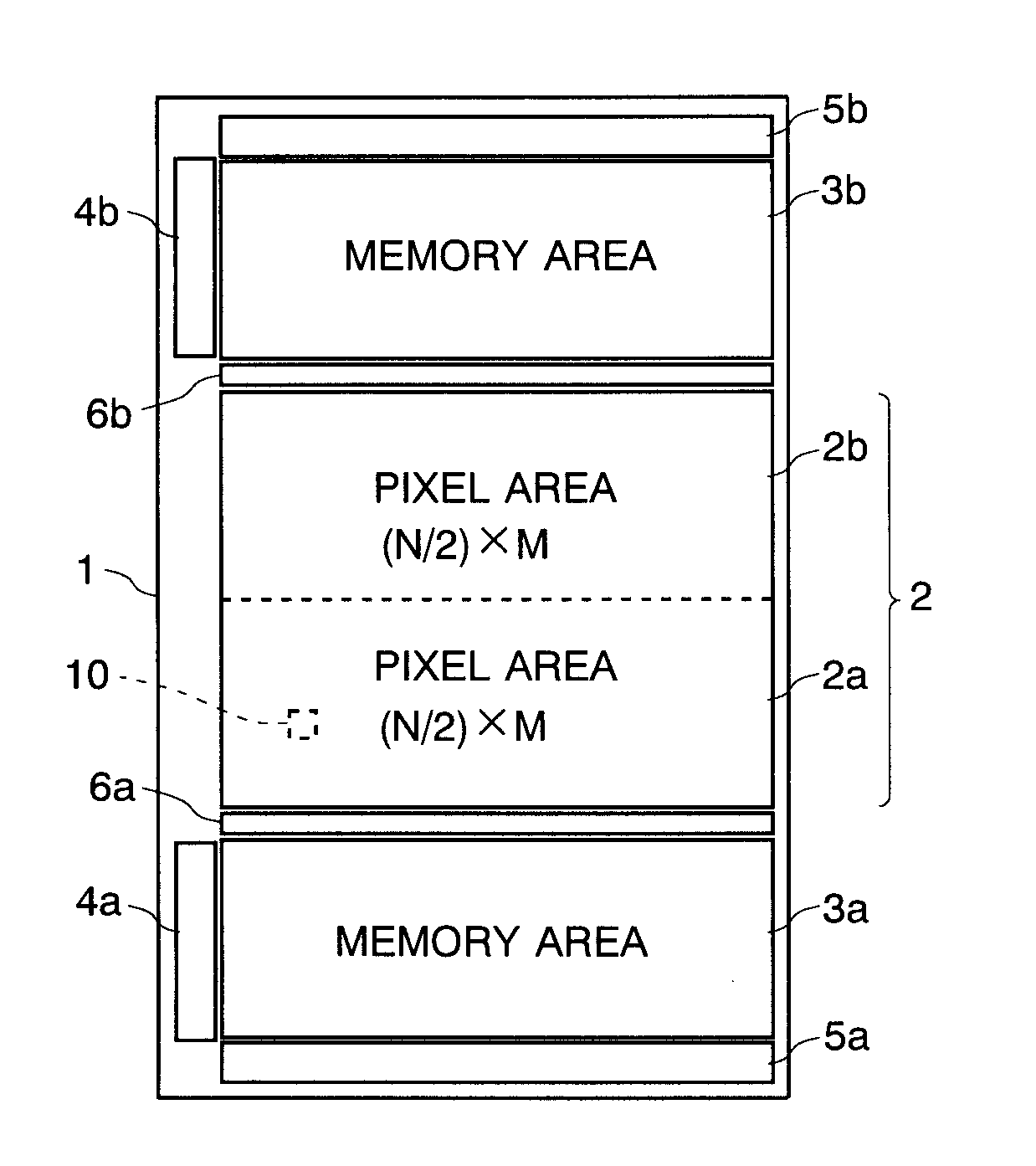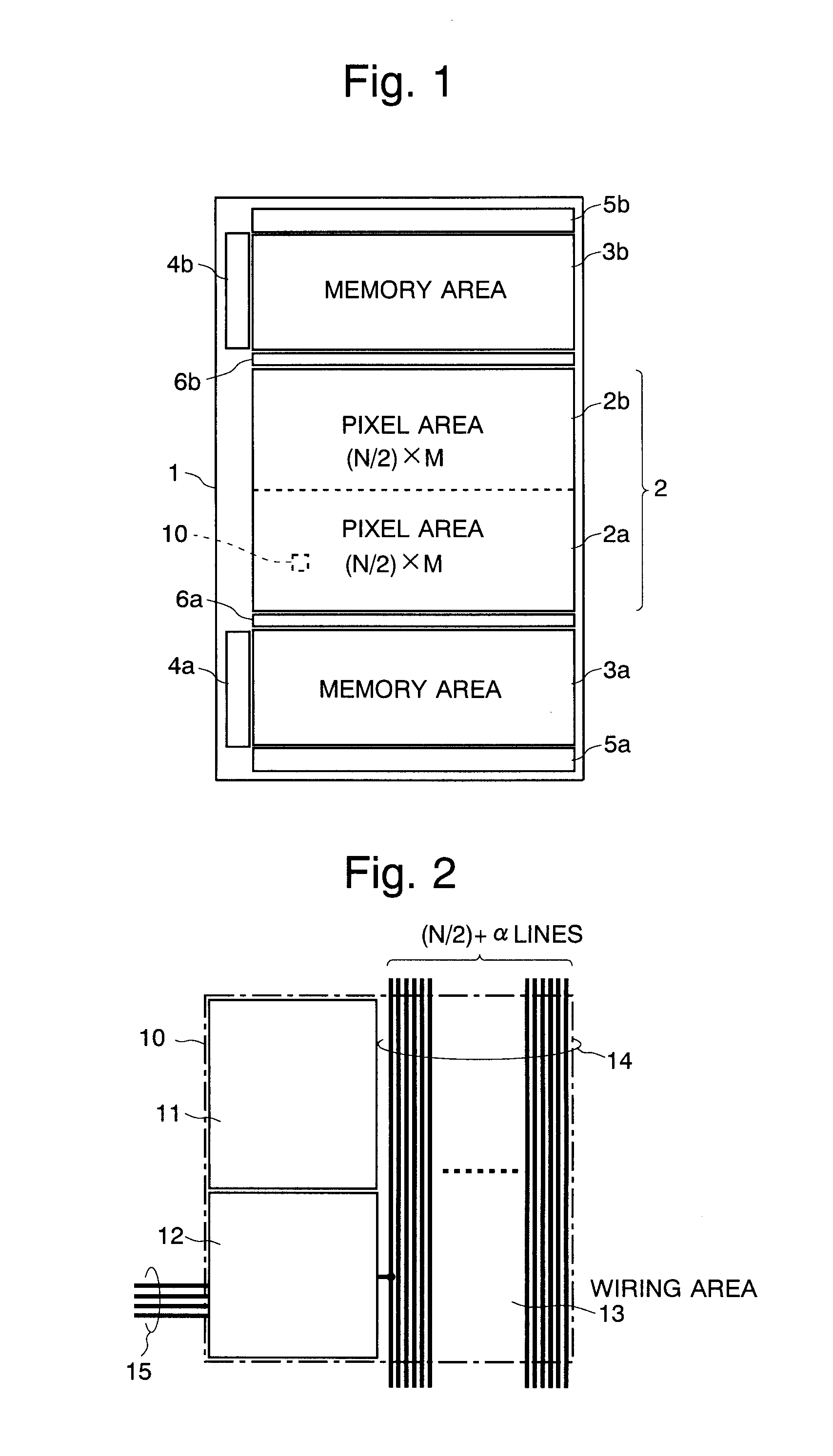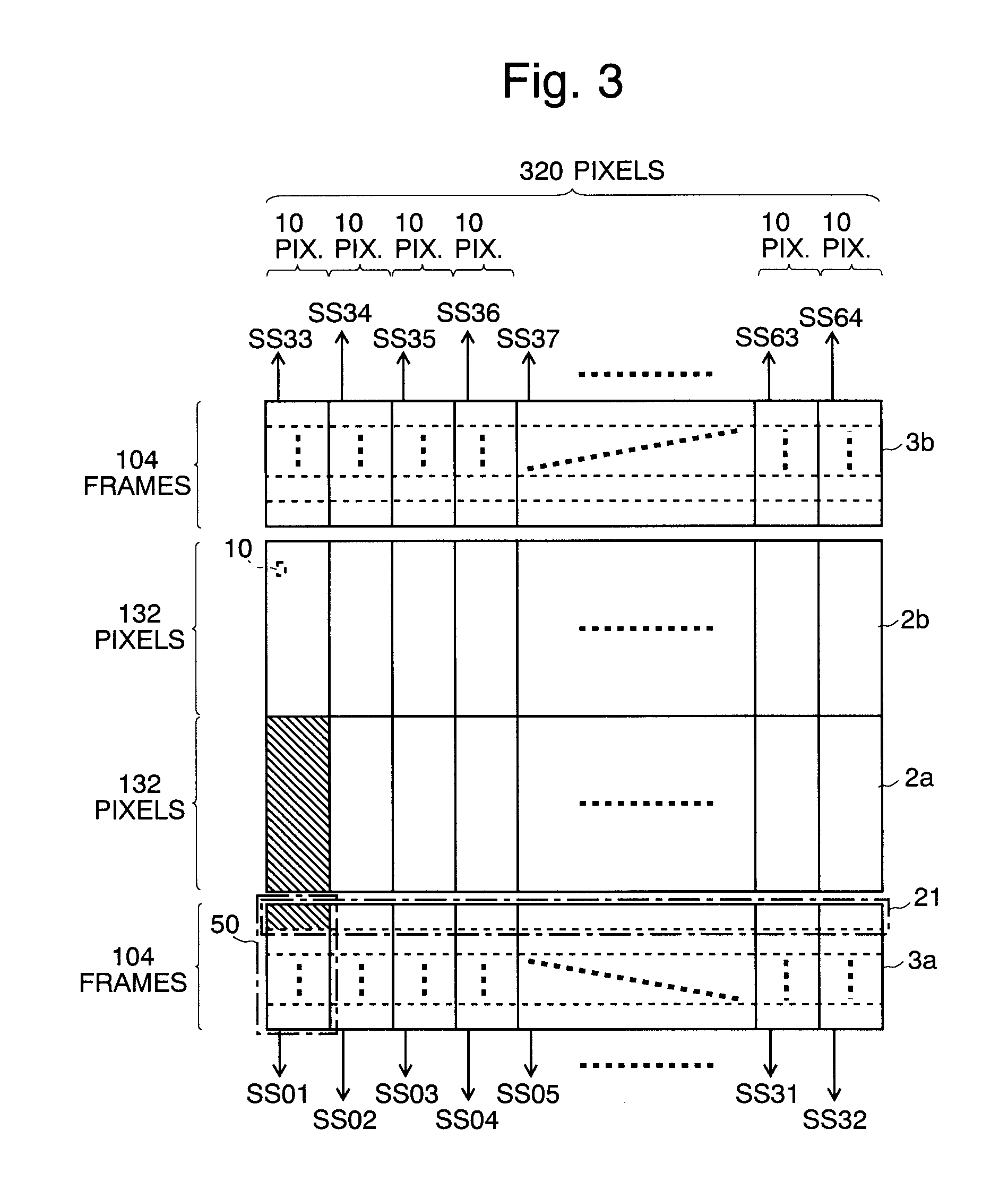Solid-state image sensor and drive method for the same
- Summary
- Abstract
- Description
- Claims
- Application Information
AI Technical Summary
Benefits of technology
Problems solved by technology
Method used
Image
Examples
Embodiment Construction
[0114]A solid-state image sensor and its drive method which is an embodiment of the present invention is hereinafter described with reference to the drawings.
[0115]An overall configuration and structure of the solid-state image sensor according to the present embodiment is initially described. FIG. 1 is a schematic plan view showing the layout on a semiconductor chip of the solid-state image sensor of the present embodiment, FIG. 3 is a plan view showing a schematic configuration of the pixel area and memory area in the solid-state image sensor of the present embodiment, and FIG. 4 is a block diagram of the main portion corresponding to approximately one-half of the semiconductor chip of the solid-state image sensor of the present embodiment.
[0116]As shown in FIG. 1, in the present solid-state image sensor, the pixel area 2 (2a and 2b) for receiving light and producing signals for each pixel and the memory areas 3a and 3b for holding the signals for a predetermined number of frames ...
PUM
 Login to View More
Login to View More Abstract
Description
Claims
Application Information
 Login to View More
Login to View More - R&D
- Intellectual Property
- Life Sciences
- Materials
- Tech Scout
- Unparalleled Data Quality
- Higher Quality Content
- 60% Fewer Hallucinations
Browse by: Latest US Patents, China's latest patents, Technical Efficacy Thesaurus, Application Domain, Technology Topic, Popular Technical Reports.
© 2025 PatSnap. All rights reserved.Legal|Privacy policy|Modern Slavery Act Transparency Statement|Sitemap|About US| Contact US: help@patsnap.com



